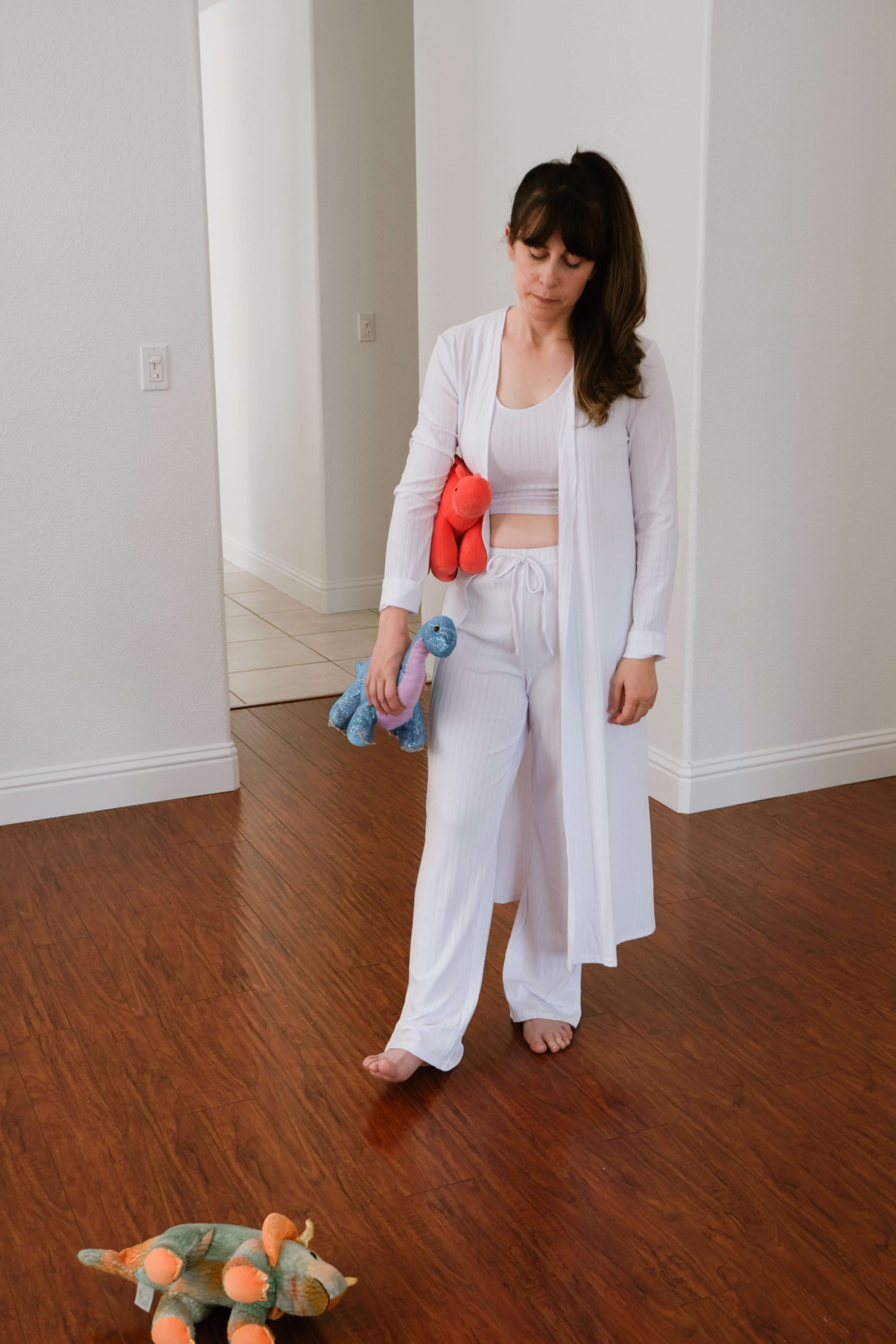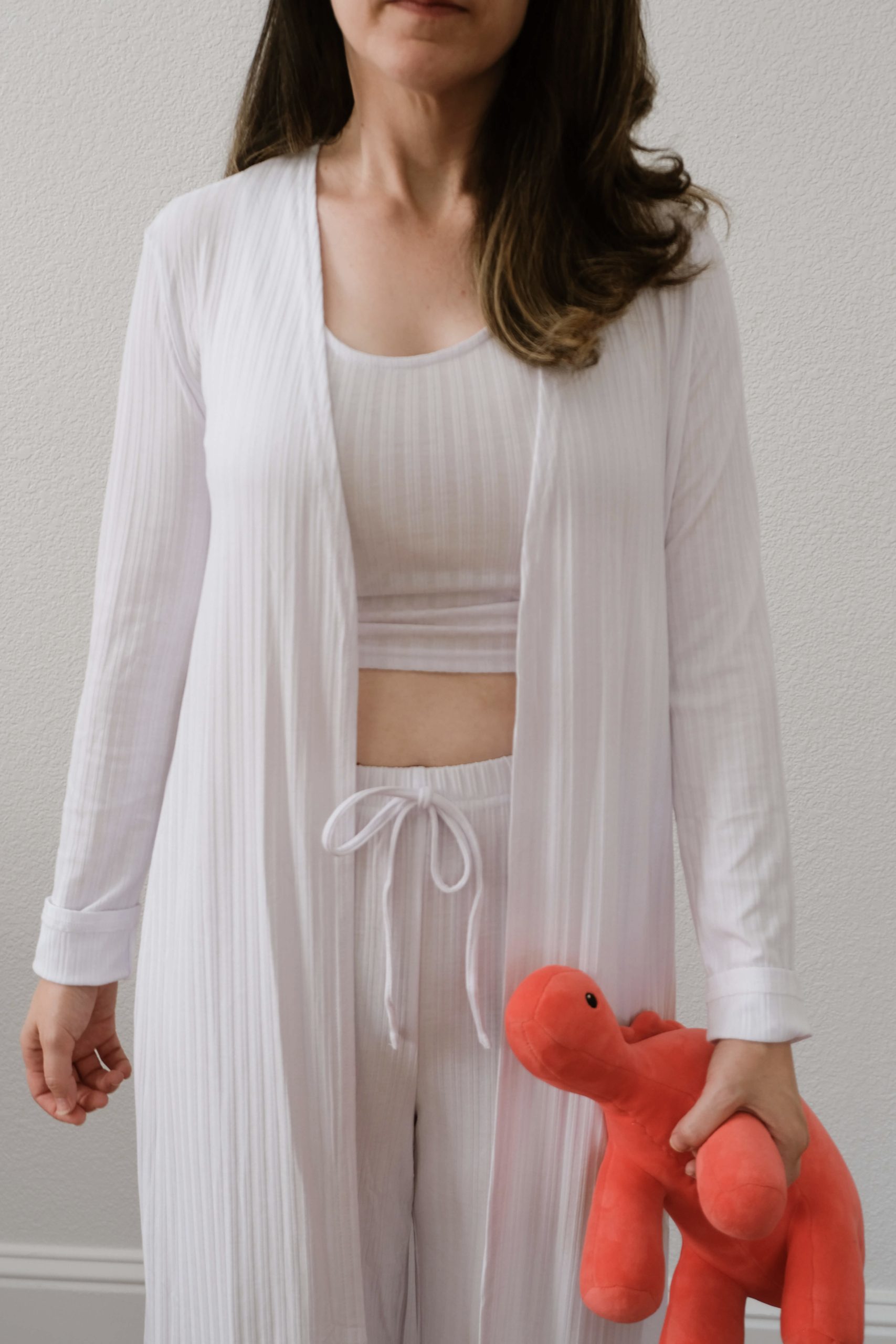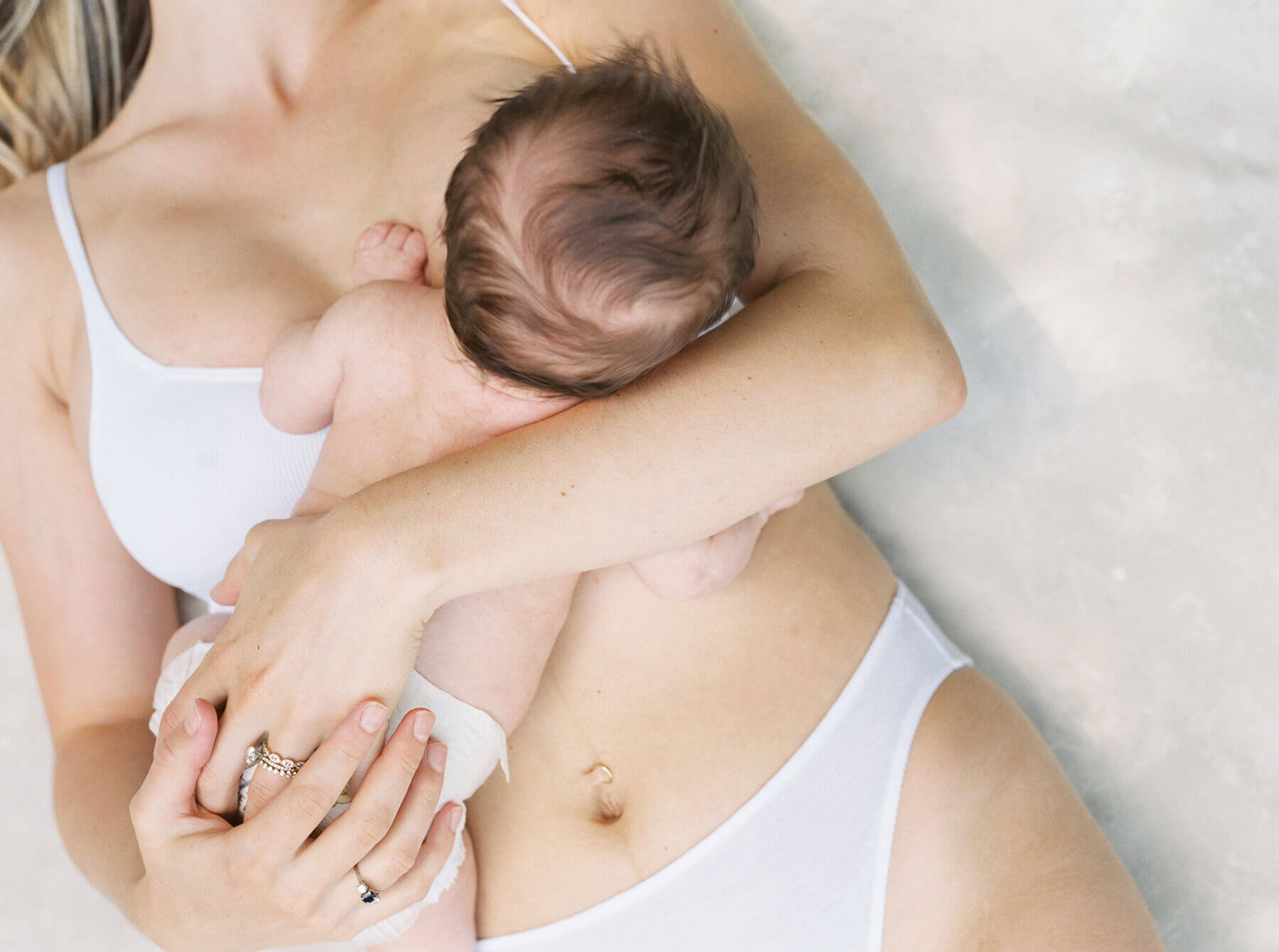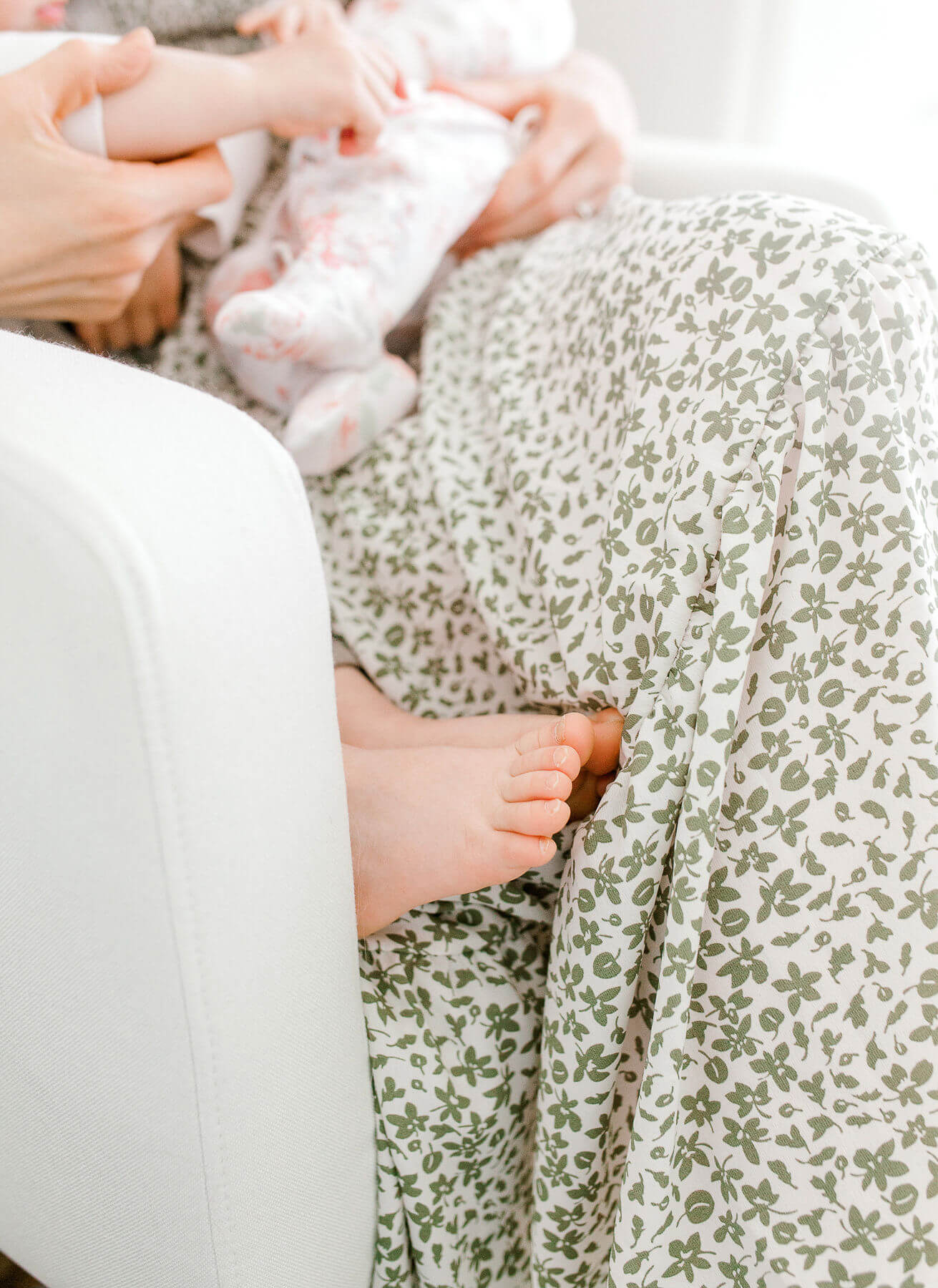Shopping for a new mattress that’s safe for bedsharing can be overwhelming with all the options on the market today. If you can avoid memory foam, do it. Memory foam has at least three major risk factors for a young bedsharing family.
The 3 Risk Factors of Bedsharing on a Memory Foam Mattress
- Memory Foam Is Too Soft For Safe Bedsharing
- Memory Foam May Cause Overheating
- Memory Foam Exposes Your Baby to Toxic Chemicals
At the end of this article, we’ll discuss your options if you already own a memory foam mattress and can’t afford to replace it.
But if you have the choice and the world is your oyster, mattress-wise, avoid memory foam.


loungewear | dinosaur stuffies
1. Memory Foam Is Too Soft For Safe Bedsharing
Memory foam mattresses are extremely popular because they are easy to ship. Most “bed in a box” brands use memory foam, as they can be rolled and vacuum sealed into a shipping box.
Many brands offer “firm” memory foam mattresses. But “firm” is relative when it comes to memory foam.
You see, being firm defeats the purpose!
Memory foam mattresses need to be soft enough to conform to the curves of each person’s unique body.
That’s what makes them so comfortable and so popular, with the general population and new moms alike!
Many new moms who begin cosleeping or bedsharing spend the majority of the night on their side, in the cuddle curl position. A soft mattress feels better on their hips and shoulders than a firm one.
For more ways to prevent and relieve aches and pains, grab the Cuddle Curl FAQ guide. Make sure to browse the 5-star reviews beforehand!
Avoid buying a memory foam mattress for infants, toddlers and growing children. Because children can sink deeply into the bed, it becomes easy for them to suffocate, especially if they are too small to turn over.
Laurie Brenner, SFGate
In the context of bedsharing with an infant, a memory foam mattress is usually not firm enough.
And mattress firmness is what helps prevent suffocation.
A firm mattress supports your body weight and helps avoid an indentation from forming underneath your body.
Any time there is an indentation in your mattress, there is a possibility that your infant could accidentally roll into it and become trapped.
That’s why a firm mattress is usually listed as the first and most important rule of safe bedsharing.
“Memory foam mattresses… form-fit the body; with time and repeated use, this pattern becomes worn into the mattress and fails to support the body appropriately. Children continue to need proper support for their spines as they grow, better served by other mattress options.”
Laurie Brenner, SFGate
From a chiropractic perspective, Dr. Ila Clemente of Flourishing Family Chiropractic says she doesn’t love memory foam since “you want something supporting you and pushing back to keep you in a good position.”
“Memory foam conforms to you, and you may not be in a good position.”
Dr. Clemente suggests a latex-based mattress to her patients because it keeps support even.
My favorite latex mattress, after extensive research, is this non-toxic model. It can tell you from personal experience that it’s magical, as it’s currently our family bed!
2. Memory Foam May Cause Overheating
Memory foam mattresses warm up as they absorb your body heat. That’s how they conform to your shape — your body heat softens the foam so it can move beneath you.
Their heat-retaining properties may help some people feel safe and cozy, but they’re certainly not ideal for a bedsharing family.
Overheating is correlated with SIDS. Studies show that an overheated baby is more likely to go into a deep sleep from which it is difficult to arouse.
A bedsharing mother has already got to worry about baby overheating from:
- high room temperature
- too-warm pajamas or bedding
- absorbing her body heat
Sleeping on a traditional memory foam mattress will add a fourth risk to that list.
3. Memory Foam Exposes Your Baby to Toxic Chemicals
Memory foam mattresses include flame retardants and other harsh chemicals that are especially dangerous for brand new babies.
Since memory foam is a polyurethane product, it is combustible. To overcompensate for this risk, most manufacturers add flame retardants to it.
In particular, the PBDE fire retardant used in most memory foam products is so dangerous that it’s banned in the EU.
Open any memory foam product – a mattress or even a pillow, and you’ll notice a strong, chemical scent. Emissions from memory foam mattress have been found to cause respiratory irritation.
The National Emissions Standards for Hazardous Air Pollutants (HAP) found that flexible polyurethane foam products, like memory foam mattresses, emit:
- methylene chloride
- toluene diisocyanate
- methyl chloroform
- methylene diphenyl diisocyanate
- propylene oxide
- diethanolamine
- methyl ethyl ketone
- methanol
- toluene
Let’s take a quick look at methylene chloride.
Short term exposure irritates the nose and throat.
Long term effects in humans involve the central nervous system, and include headaches, dizziness, nausea, and memory loss.
(Animal studies indicate that inhalation of methylene chloride affects the liver, kidney, and cardiovascular system. Limited animal studies have reported lowered fetal body weights in exposed rats.)
Memory foam mattresses are a problem for the general population – not just for the people who own them. They wear out after 10-20 years, and they end up in a landfill.
“Disposing of them becomes problematic because the chemicals in them just do not magically go away when you toss out the mattress; they remain ticking environmental bombs. Chemically toxic to the environment, these chemicals might eventually find their way into our rivers, lakes and streams, harming water supplies, plant and wildlife.”
Laurie Brenner, SFGate
But What if you can’t afford to Replace Your Memory Foam Mattress?
If you’re currently bedsharing on a memory foam mattress, but you can’t afford to replace it, I’m sorry if you’re feeling overwhelmed or on the verge of tears right now.
I’ve been there.
Both of my babies started out bedsharing on a memory foam mattress. We didn’t know any better.
(Yes, even me! The girl with the bedsharing blog!)
You live and learn.
And in the meantime, before you can purchase a safer mattress, there are some things you can do to reduce risk!
5 Techniques to Reduce Bedsharing Risks on a Memory Foam Mattress:
- Transition from bedsharing to separate-surface cosleeping. That way your baby will be on their own firm surface. (e.g. a sidecar crib attached to your bed, their cot pulled right up to your bed, or your mattress beside their crib mattress directly on the floor.)
- If you decide to continue bedsharing, flip your mattress over. Is the other side more firm? If you have a hybrid memory foam mattress, this is often the case.
- In your bed, be vigilant about keeping baby on their back. That way they are getting fresh oxygen and aren’t breathing from inside an indentation.
- Do not place baby in-between you and your partner. Have baby sleep beside you, and only you. That way you will only have to worry about one indentation, not two. (You can install a mesh bedrail on their side of the bed, if you’d like.)
- Dress your mattress with breathable bedding. Bamboo, hemp, cotton, and wool are breathable fabrics that will help keep your baby cool beside you all night. Here are my two favorite breathable sheets. (These two are more affordable options.)
Sending good vibes your way! Hoping you can find an affordable, safe option for your little family!
Disclaimer: If you make a purchase through an affiliate link, I may receive a small commission at no additional cost to you.






[…] Memory foam mattresses are so dangerous for young babies, in my opinion, I have a thorough blog post devoted to that topic. […]